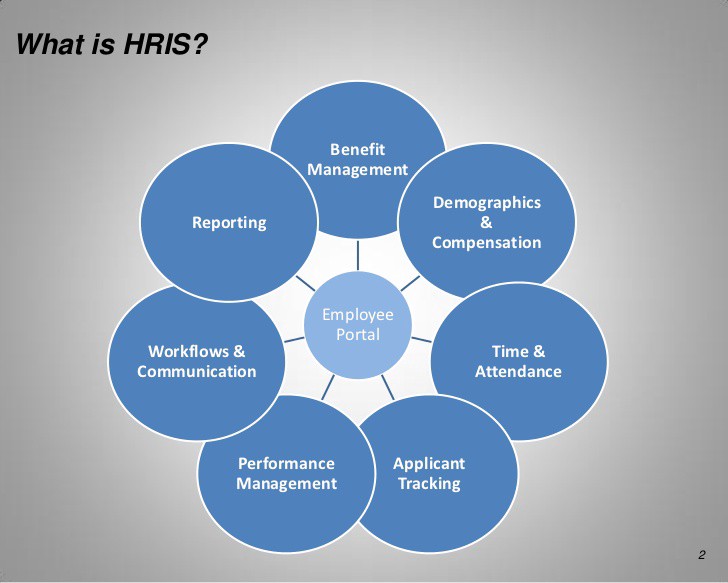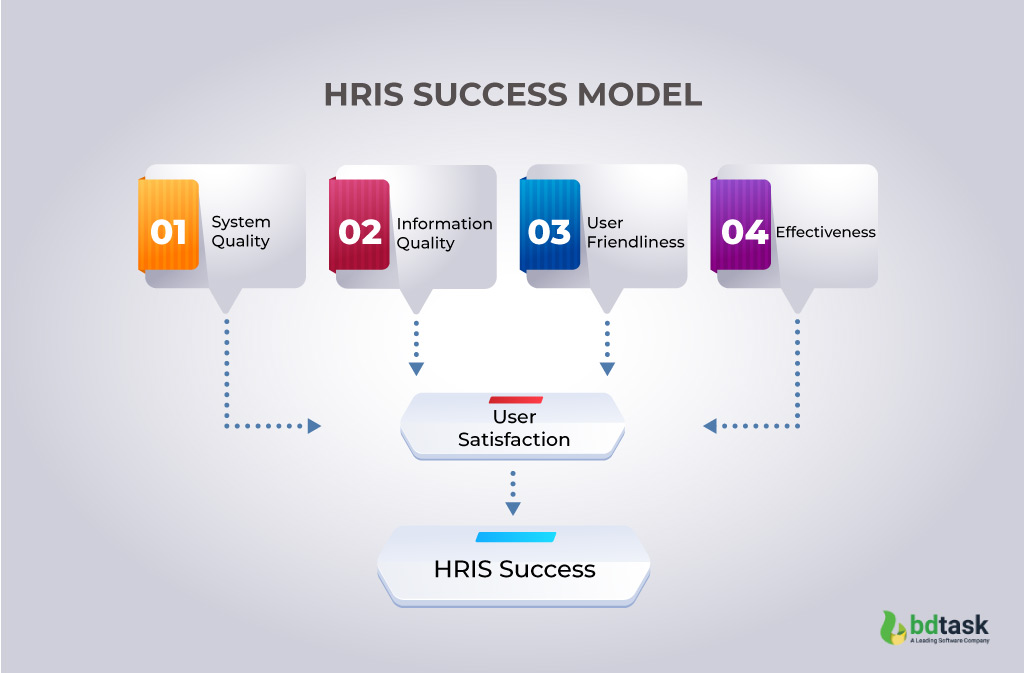HRIS HRD plays a crucial role in managing employees effectively. HRIS, or Human Resource Information Systems, provides the technological foundation for HR processes, while HRD, or Human Resource Development, focuses on employee growth and development. By integrating HRIS and HRD, organizations can enhance employee management, improve efficiency, and foster a culture of continuous learning.
HRIS HRD offers a comprehensive suite of modules to manage various HR functions, including payroll, benefits, recruitment, and performance management. These modules streamline HR processes, reduce manual errors, and provide real-time data for informed decision-making. HRD, on the other hand, focuses on developing employee skills, knowledge, and behaviors through training, coaching, and mentoring programs.
By aligning HRIS and HRD, organizations can create a cohesive system that supports employee growth while optimizing HR operations.
Human Resource Information Systems (HRIS)
Human Resource Information Systems (HRIS) are software systems that help organizations manage and track employee-related data. They automate and streamline HR processes, making it easier for HR professionals to manage employee information, payroll, benefits, and other HR-related tasks.
Functionality of HRIS, Hris hrd
HRIS systems typically include a range of modules that cover different HR functions. Common HRIS modules include:
- Employee data management: Tracks employee personal information, contact details, job titles, and other relevant data.
- Payroll processing: Automates payroll calculations, deductions, and tax withholding.
- Benefits administration: Manages employee benefits plans, including health insurance, retirement plans, and paid time off.
- Performance management: Tracks employee performance, sets goals, and provides feedback.
- Recruitment and onboarding: Supports the hiring process, from job posting to onboarding new employees.
- Training and development: Tracks employee training records, identifies training needs, and provides access to training materials.
Benefits of HRIS
Implementing a HRIS can provide several benefits for organizations, including:
- Improved efficiency and productivity: Automating HR processes saves time and reduces manual errors.
- Enhanced data accuracy and consistency: Centralized employee data ensures accuracy and consistency across different HR systems.
- Better decision-making: Access to real-time HR data supports informed decision-making.
- Improved employee self-service: Employees can access their HR information and make changes online.
- Reduced costs: HRIS systems can help reduce administrative costs by automating tasks and eliminating paper-based processes.
Challenges of HRIS
While HRIS systems offer many benefits, there are also some challenges associated with their implementation:
- Cost: HRIS systems can be expensive to purchase and implement.
- Data security: HRIS systems contain sensitive employee data, so it’s important to ensure adequate security measures are in place.
- Integration with other systems: HRIS systems need to be integrated with other business systems, such as payroll and accounting systems.
- Change management: Implementing a HRIS can be a significant change for employees, so it’s important to manage the change effectively.
- Training: Employees need to be trained on how to use the HRIS system effectively.
Human Resource Development (HRD)

Human Resource Development (HRD) is a strategic and integrated approach to identifying and developing the skills, knowledge, and abilities of employees to improve their performance and contribute to the overall success of the organization.
HRD plays a crucial role in organizational success by ensuring that the workforce is equipped with the necessary competencies to meet current and future business challenges.
Types of HRD Initiatives
HRD initiatives can vary depending on the specific needs and goals of the organization. Some common types of HRD initiatives include:
- Training and development programs: These programs aim to enhance employees’ skills and knowledge through formal training sessions, workshops, or on-the-job training.
- Performance management systems: These systems provide employees with regular feedback on their performance and identify areas for improvement and development.
- Career development planning: This process helps employees identify their career goals and develop a plan to achieve them.
- Mentoring and coaching programs: These programs pair employees with more experienced individuals who provide guidance and support for their professional growth.
Importance of HRD in Employee Growth and Development
HRD is essential for employee growth and development because it provides them with the opportunities and support they need to:
- Enhance their skills and knowledge:
- Improve their performance:
- Advance their careers:
- Increase their job satisfaction:
By investing in HRD, organizations can create a more engaged and productive workforce that is better equipped to handle the challenges of the changing business environment.
Integration of HRIS and HRD
Integrating Human Resource Information Systems (HRIS) and Human Resource Development (HRD) is crucial for effective employee management. HRIS automates HR processes, while HRD focuses on employee growth and development. By integrating these systems, organizations can streamline HR functions, improve employee engagement, and enhance overall business performance.
Benefits of HRIS-HRD Integration
- Improved Data Management:Integration ensures consistent and accurate employee data across all HR systems, eliminating data silos and redundancy.
- Enhanced Employee Self-Service:Employees can access HRIS for tasks like viewing pay stubs, updating personal information, and requesting training.
- Talent Management Optimization:HRD can leverage HRIS data to identify high-potential employees, plan succession, and develop customized training programs.
Challenges of HRIS-HRD Integration
- Data Privacy and Security:Integrating systems involves sharing sensitive employee data, so robust security measures must be in place.
- Technical Compatibility:Ensuring compatibility between different HRIS and HRD systems can be challenging, requiring technical expertise and resources.
- Change Management:Integrating systems requires organizational change, which can face resistance from employees and managers.
Successful HRIS-HRD Integrations
- Google:Google integrates its HRIS with its learning management system, enabling employees to access training and development opportunities seamlessly.
- IBM:IBM’s HRIS-HRD integration allows managers to track employee performance and identify training needs, facilitating targeted development plans.
- Deloitte:Deloitte’s integrated system provides employees with personalized learning paths based on their roles, skills, and career aspirations.
HRIS and HRD in the Digital Age

In the digital age, technology is revolutionizing every aspect of business, and HR is no exception. HRIS and HRD are both undergoing significant transformations as a result of the rapid advancement of technology. This has led to the emergence of new trends and challenges that HR professionals must be aware of in order to stay ahead of the curve.
One of the most significant impacts of technology on HRIS is the increasing use of artificial intelligence (AI) and automation. AI-powered HRIS systems can automate many of the tasks that were traditionally performed by HR professionals, such as screening resumes, scheduling interviews, and onboarding new employees.
This can free up HR professionals to focus on more strategic initiatives, such as developing and implementing talent management programs.
Another emerging trend in HRIS is the use of cloud-based systems. Cloud-based HRIS systems are more flexible and scalable than traditional on-premises systems, and they can be accessed from anywhere with an internet connection. This makes it easier for HR professionals to manage their HR data and processes, regardless of their location.
HRD is also being impacted by the digital age. The rise of online learning has made it easier for employees to access training and development opportunities. Online learning platforms offer a wide variety of courses, from basic skills training to advanced leadership development programs.
This can help employees to stay up-to-date on the latest trends and technologies, and it can also help them to develop the skills they need to succeed in their careers.
In order to adapt to the demands of the digital age, HR professionals must be willing to embrace new technologies and trends. They must also be able to develop and implement HR strategies that are aligned with the organization’s overall business goals.
Integration of HRIS and HRD
The integration of HRIS and HRD is essential for organizations that want to maximize the benefits of both systems. By integrating HRIS and HRD, organizations can create a more efficient and effective HR function that is aligned with the organization’s overall business goals.
There are a number of benefits to integrating HRIS and HRD, including:
- Improved data management: By integrating HRIS and HRD, organizations can create a single source of truth for all HR data. This can help to improve the accuracy and consistency of HR data, and it can also make it easier to track and report on HR metrics.
Human Resource Information Systems (HRIS) and Human Resource Development (HRD) are two critical components of modern HR management. HRIS provides a centralized platform for managing employee data, payroll, and benefits, while HRD focuses on developing and enhancing employee skills and knowledge.
Free HR system software can help organizations implement HRIS and HRD initiatives cost-effectively, enabling them to streamline HR processes and enhance employee engagement.
- Increased efficiency: By automating many of the tasks that were traditionally performed by HR professionals, organizations can free up HR professionals to focus on more strategic initiatives. This can help to improve the efficiency of the HR function, and it can also free up HR professionals to focus on more value-added activities.
- Improved decision-making: By having access to a single source of truth for all HR data, HR professionals can make more informed decisions. This can help to improve the quality of HR decision-making, and it can also help to align HR decisions with the organization’s overall business goals.
Last Point: Hris Hrd
In the digital age, HRIS HRD continues to evolve, leveraging technology to enhance employee experiences and drive organizational success. Emerging trends, such as artificial intelligence and automation, are transforming HR processes and enabling organizations to adapt to the changing demands of the workplace.
By embracing innovation and fostering a collaborative approach between HRIS and HRD, organizations can create a dynamic and engaging work environment that empowers employees and drives business growth.
FAQ Compilation
What are the benefits of integrating HRIS and HRD?
Integrating HRIS and HRD provides numerous benefits, including improved employee management, streamlined HR processes, enhanced data accuracy, and a more comprehensive approach to employee development.
How can HRIS and HRD support employee growth and development?
HRIS provides data and insights into employee performance, skills, and development needs. HRD leverages this data to design and deliver targeted training and development programs that support employee growth and career advancement.
What are the challenges of integrating HRIS and HRD?
Integrating HRIS and HRD can be challenging due to differences in systems, data formats, and organizational culture. However, with careful planning, communication, and collaboration, these challenges can be overcome.
 HRIS System
HRIS System
